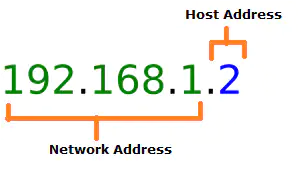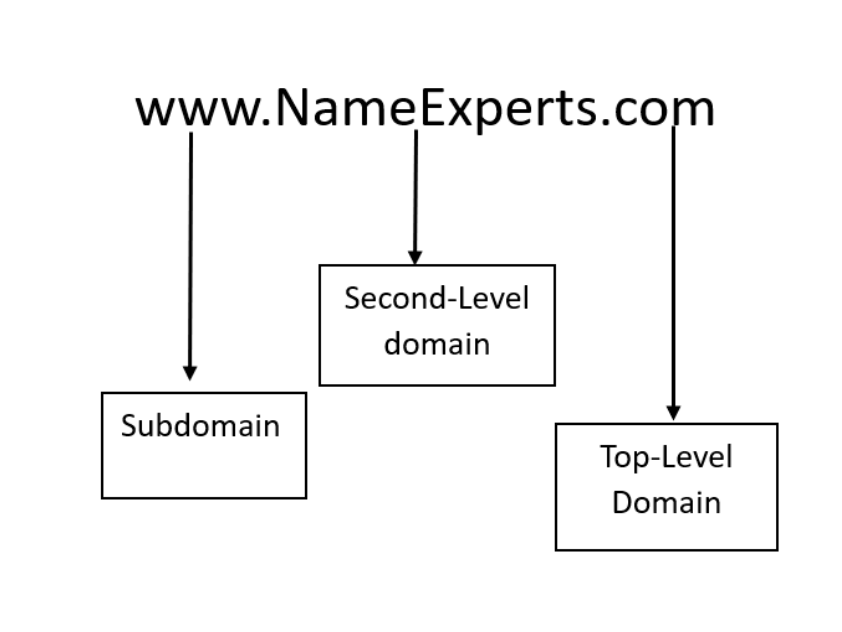A domain name is what you type when you want to visit a website. For example, you type “Google.com” into your web browser, and it takes you directly to Google to search for stuff. But a lot happens behind the scenes to ensure the domain name you type takes you to the correct website. This article will explain what happens and demystify how the web works.
How A Domain Name Leads You To A Website On the Internet
The Internet is an extensive network of computers connected to each other via cables; each computer on this network can communicate with others. Every computer is identified by a unique Internet Protocol (IP) address, which consists of four numbers separated by periods, e.g., 192.168.1.2.

Example of an IP address.
Source: Samsung
Each website is hosted by a specific computer or server. When you want to visit that website, you need to point to the IP address of the computer hosting it. But, IP addresses are difficult to remember. Imagine you had to memorize the unique IP addresses of all the websites you visit; that’ll be impossible, which is why domain names were invented.
A domain name is a human-readable name pointing to a specific IP address on the web. Whenever you type a domain name into your browser, it queries a vast database called the Domain Name System (DNS) and gets the corresponding IP address of the website you want to visit.
The Domain Name System is akin to a phonebook in your home containing your friends’ names and phone numbers. You don’t remember all your friends’ phone numbers but know their names. Whenever you need a specific number, you just check for the name and get it. This is precisely what the Domain Name System accomplishes; you type a domain, and it gives the correct IP address to your web browser. Your browser fetches the data from the server using that IP address and shows it to you.
Parts Of A Domain Name
A domain name has three main parts; top-level domain (TLD), second-level domain, and subdomain.

1. Top-Level Domain
The top-level domain (TLD) is the last segment of text in a domain name. The most popular TLDs you should be familiar with include
- .com
- .net
- .co
- .edu
- .org
Yet, there are over 1,500 TLDs you can choose from. A lot of them are assigned to specific countries, such as;
- .uk (United Kingdom)
- .tv (Tuvalu)
- .br (Brazil)
- .ca (Canada)
- .cn (China)
- .de (Germany)
There are many other random TLDs such as .website, .book., .dog, .attorney, and .band.
2. Second-level domain (SLD)
This is the middle part of the domain name. It is a unique word or phrase identifying the website you want to visit. This part of the domain plays the biggest role in branding an online business. It’s also important in search engine rankings.
3. Subdomain
A subdomain is the part that comes before the main domain. They are attached to the main domain and separated by a period, e.g., blog.example.com, support.website.com.
Subdomains function like independent websites but are attached to the main site. For instance, you can have an online store or a blog attached to your main business site.
Who Manages the Domain Name System (DNS)
The Internet Corporation for Assigned Names and Numbers (ICANN) is the agency responsible for managing the global domain name system. It is a nonprofit organization that enacts policies for creating and managing domain names. It permits companies called domain registrars to sell domain names on its behalf.
Technically, you don’t own any domain that you use. You’re leasing it from ICANN (via your domain registrar) and controlling it as long as you renew the registration. If your registration expires, another person can take control of the domain.
How To Buy A Domain Name
To buy a domain, you can head to any domain registrar’s website and check if someone else has not registered the domain name you want. If so, you can immediately pay for it and start using it.
If the domain name you want has already been registered, don’t fret. You can hire a domain name broker to help you trace, contact the owner, and negotiate a possible purchase. Domain brokers have experience arranging domain sales, so they’ll help you pay a fair price for the domain you want.
Tips For Choosing A Domain Name
- It should be short and simple. Longer domain names are more difficult to remember.
- Avoid using hyphens and numbers in the domain name.
- Use keywords related to your line of business. This helps improve your branding and search rankings.
- A .com TLD should be your first option. If that isn’t available, use other popular TLDs such as .co and .net. The more popular the TLD is, the easier it will be to promote.
Frequently Asked Questions about Domains
How long can I register a domain name for?
The maximum registration period for a domain name is 10 years. But you can renew it every 10 years and keep control of the domain.
What is a premium domain name?
They are high-quality domains that people often buy to flip for a higher price later. Demand for premium domains is high, and the price increases over time, making them good investments.
Can You Sell Your Domain Name?
Yes, you can sell your domain name anytime you want to. You can do that yourself or enlist a domain broker to find a buyer for the best price.
How do you find the owner of a domain?
You can identify a domain’s owner by querying the public WHOIS database, which contains contact information about the registered owner of every domain.
What happens if I don’t renew my domain name?
Registrars usually give a 30-day grace period in which you can reclaim the domain. Your domain will be auctioned on the market if that period runs out.
What is the most expensive domain name ever?
Voice.com sold in 2019 for $30 million, marking the most expensive domain name purchase on record.



